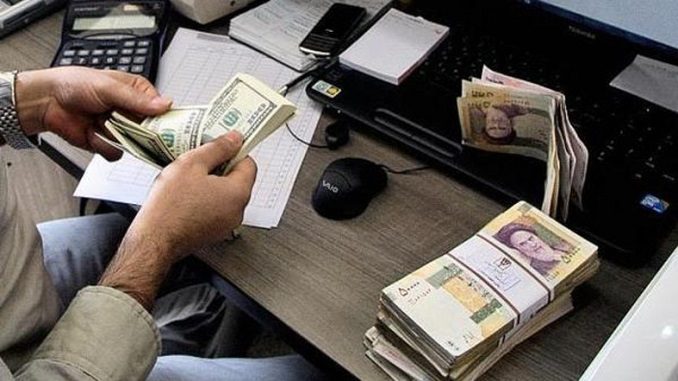
According to Iranian agencies, the black currency market in Tehran has stopped the selling and buying of foreign currencies because of a sharp rise in the price of the U.S. dollar, the euro and the pound to levels that existed before the nuclear agreement was reached, Al-Arabiya reports.
Financial websites, mainly Al-Mithquaal, report that the price of one dollar now exceeds 41,000 Iranian riyals, which has caused panic and confusion in Tehran’s black market where exchange offices have stopped buying and selling the dollar and foreign currencies.
Some analysts believe that the announcement of the budget deficit in the first half of the current Iranian year and the circulation of reports on “manipulation of the foreign exchange market to compensate for a portion of the budgetary deficit” have led to a rise in price of the U.S. dollar and the of other foreign currencies against the Iranian riyal.
The head of Iran’s Central Bank, Ouialiullah Saif, has attributed the rise in foreign currency prices against the riyal to new U.S. sanctions against Tehran. Washington imposed sanctions on Iranian entities and personalities linked to the Iranian Revolutionary Guards after Donald Trump announced his new policy vis-à-vis the regime in Tehran on October 13.
The current discussion is about the price of the Iranian currency and the possibility of it collapsing against the dollar as was the case before the nuclear agreement. The Iranian riyal keeps crashing against foreign currencies and has dropped to an unprecedented level in recent months. The price of gold in Iran has risen to unprecedented levels over the past two years, where the price of a so-called full gold bar is reportedly worth 10,400,000 riyals.
Economists had expected the nuclear agreement between Tehran and the six big powers to have a positive effect on Iran’s markets, but it had little impact on the Iranian economy which suffers from corruption and mismanagement. The situation has worsened in light of President Trump’s opposition to the nuclear deal which he described as “bad” and “stupid”.
In the meantime, in line with plans to eliminate the U.S. dollar in Iran’s foreign trade by clinching monetary agreements, the Central Bank of Iran is pursuing the policy of expanding the role of Iranian currency in the basket of its major trade partners, the head of CBI’s Exports Department said.
“The goal of the central bank is to entrench the rial in the currency basket of other nations, meaning that our major business partners would employ the Iranian national currency for imports as we use their national currencies,” Samad Karimi was also quoted as saying by the official website of CBI.
Mohammad Reza Pour-Ebrahimi, the head of Majlis Economic Commission, has also spoken about the necessity of “eliminating the domination of the U.S. dollar in the country’s economic transactions”.
Emphasizing that the administration must pursue the removal of the greenback, he said the fact that reaching bilateral and multilateral monetary agreements has been specifically considered in the Sixth Five-Year Development Plan (2017-2022) shows that the parliament is adamant in sidelining the U.S. currency.
